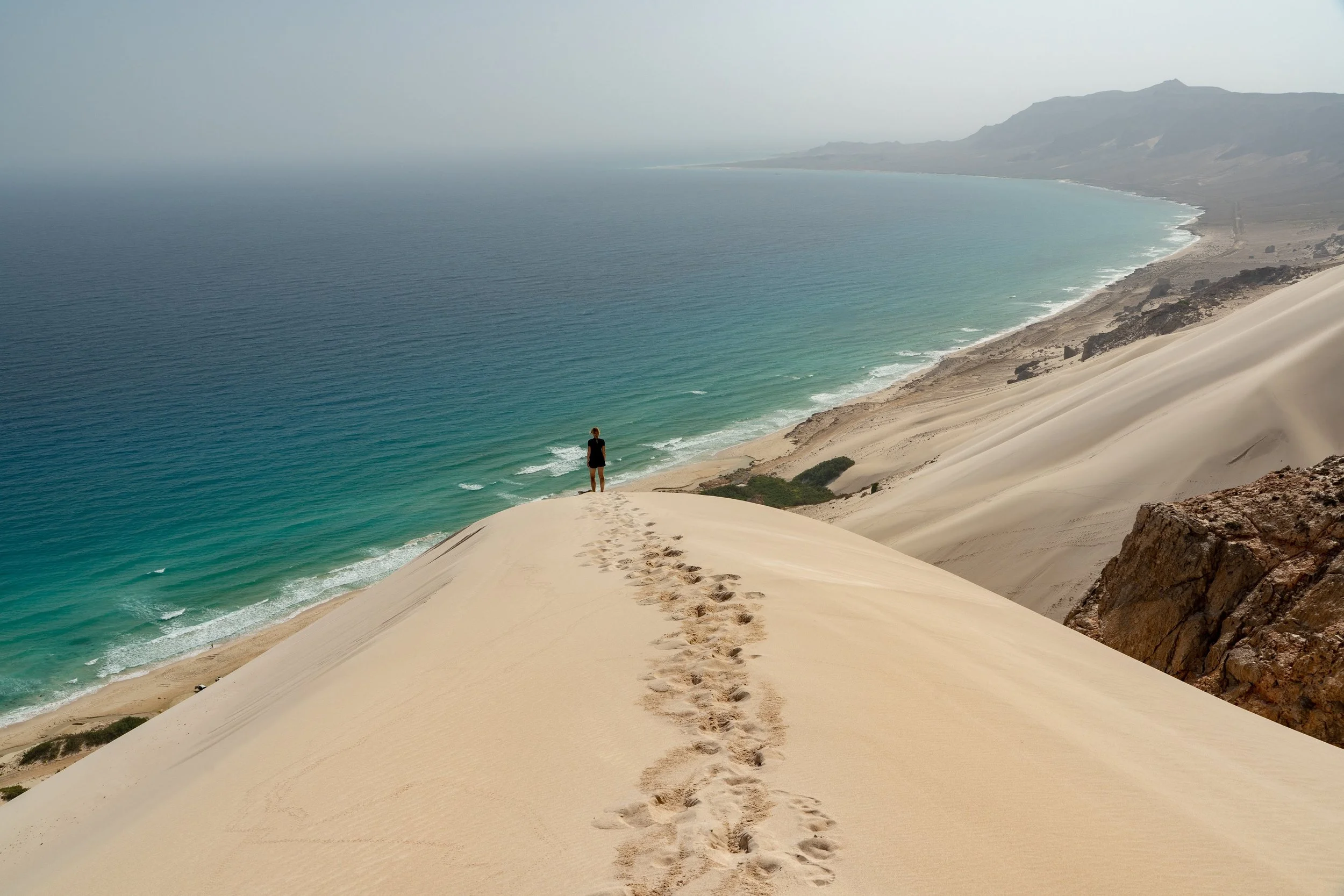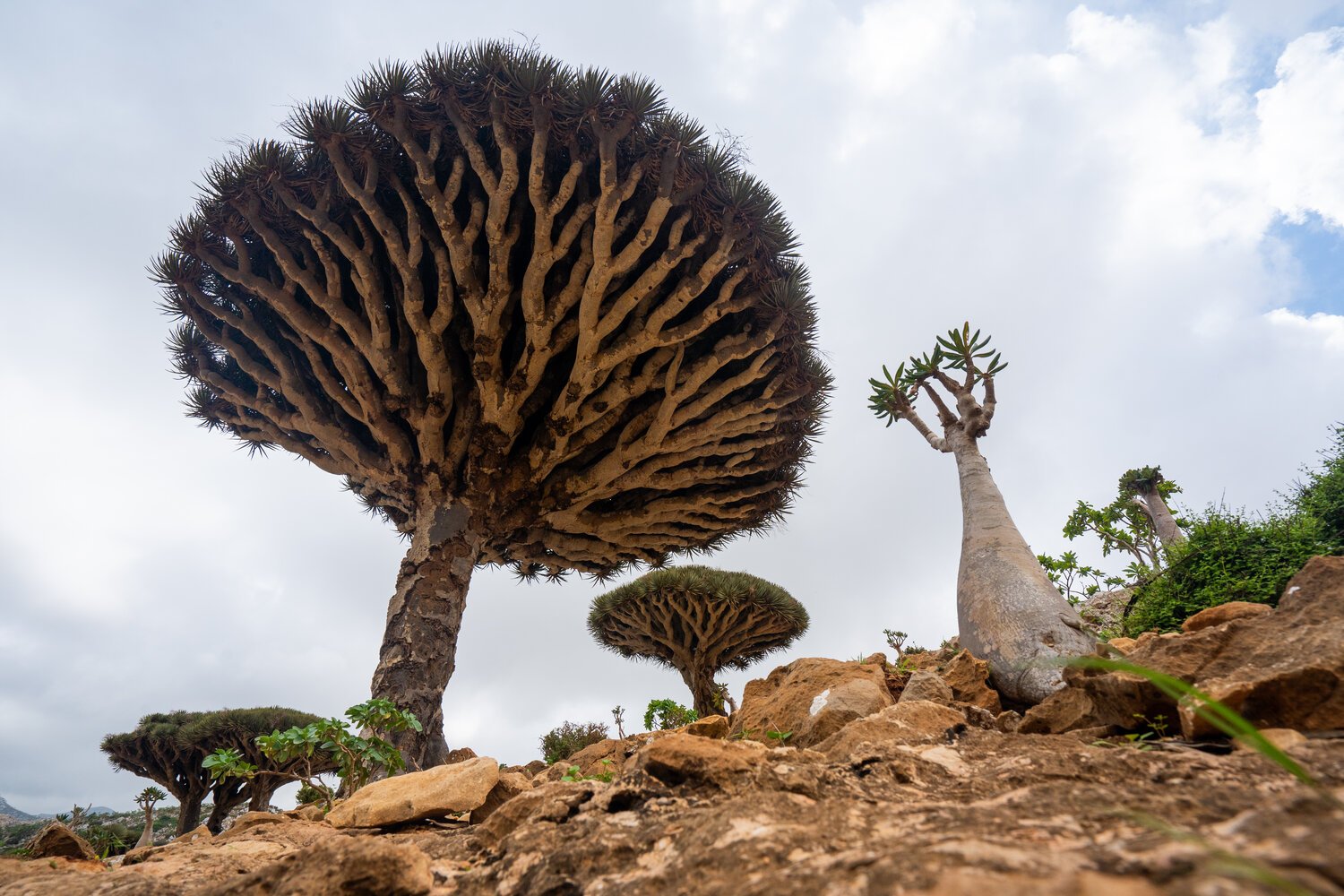When is the Best Time to Visit to Socotra?
Planning your trip to Socotra
If you’re thinking of visiting Yemen’s ecological paradise, one question you definitely do not want to forget about is when should you visit Socotra? It’s hard enough to get there. Let’s not ruin your experience by going at the wrong time. In this brief article, we’ll break it down for you month-by-month.
January— GOOD
January marks the beginning of the long dry season. Fall monsoon rains generally taper off at the beginning of the month, leaving a lush, green landscape throughout the island. The oceans also begin to calm down, making activities like snorkelling and diving possible again. However, damage caused by the Fall monsoon may still be evident on the island, as many years see the dirt roads washed away in December, making some overland transportation to more remote parts of the island difficult. The flowers bloom towards the middle and end of the month.
February-March— EXCELLENT
February and March are two of the best possible months to visit Socotra. The weather is dry, relatively cool, and still very green, as the greenery caused by the monsoon rains have not completely turned brown. The oceans are calm, which is great for aquatic activities, and trekking is also ideal. In March, the famous bottle trees bloom, showing their pink flowers to the world.
April— GREAT
April marks the end of the long dry season on Socotra, where temperatures start to really rise and the winds begin to pick up a bit. All of the water has evaporated from the Fall Monsoon, resulting in a more arid climate on the island, and this may cause the air to feel a little dusty or hazy. The waters are calm; snorkelling and diving are great, as are boat trips. The later the dry season progresses the dustier and hotter the island gets, so April is preferable to May in terms of times to visit.
May-September— AVOID
From around mid-May through mid-September marks Socotra’s hot, windy summer monsoon. Strong winds create dust and sand storms, as well as large ocean swells. Unless you have a specific interest in paragliding or watching turtles hatch on the beaches (July), the summer monsoon is an unpleasant and uncomfortable time to visit Socotra. Flights normally cease to the island sometime in the middle of May and pick up again when the winds subside normally by early to mid-September.
October & November— EXCELLENT but wet (maybe)
Starting in late September, the windy monsoon transitions into the wet monsoon. But do not let this scare you away. October rains breathe life into the island, allowing plants to grow and fills the island with greenery, much like Arabia’s coastal Khareef. October into mid or even sometimes late November is generally a good time to visit Socotra, especially for hiking and mountain activities, as the wadis fill with clean, fresh water and the landscape is lush. However, ocean activities like snorkelling or diving are not great during the fall monsoon. Cyclones are possible during this time frame but are more likely to hit in late November or December. Expect some rainy days, but remember, with rain comes vibrant verdant colours.
December— AVOID
December is the wettest month of the year in Socotra— the island typically receives almost half their annual rainfall in December (and late November). Flooding is common, and this can wreak havoc on travel, as roads may become impassable and off-roading impossible. Trekking conditions are unideal, and the seas are not great for snorkelling. Generally speaking, December is not a good time to visit Socotra.
Interested in visiting to Socotra?
UPCOMING TRIPS TO SCOTRA
RELATED ARTICLES










